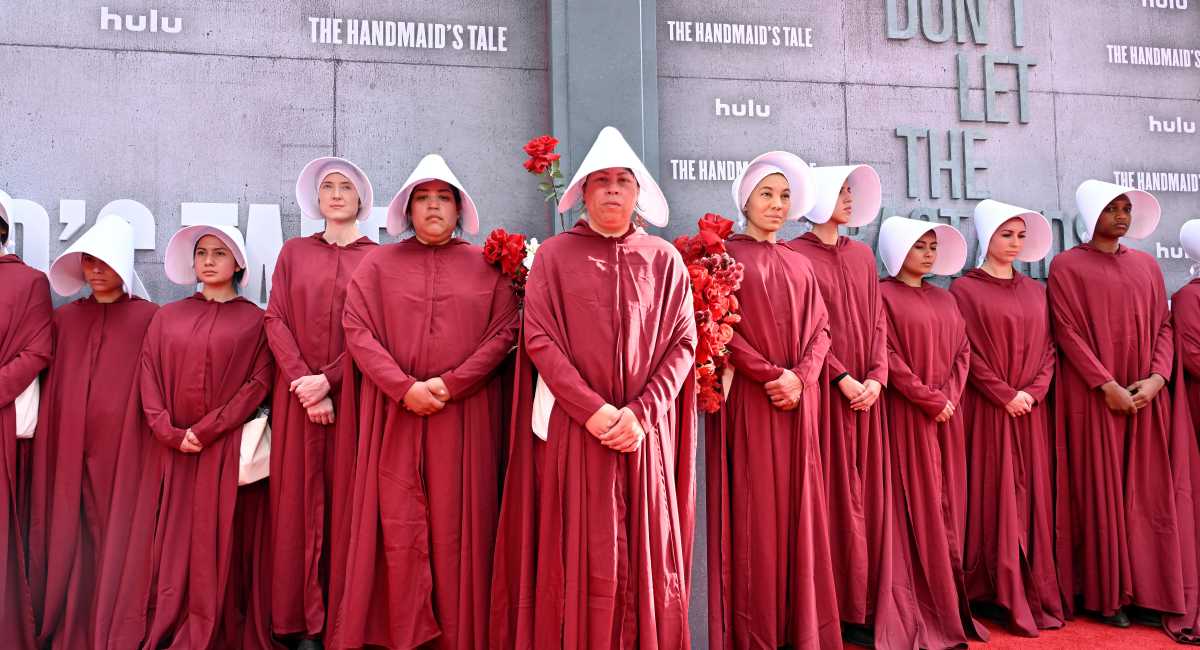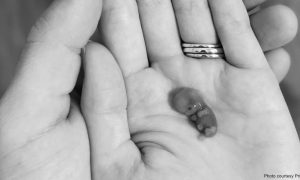Though “The Handmaid’s Tale” — a book by Margaret Atwood made into a Hulu Original series — is popular among those who feel it is a vision of society without legalized abortion, it is actually the practice of surrogacy that bears more similarities to the horrors of the fictional, dystopian “Gilead.”
KEY TAKEAWAYS:
- Surrogacy, rather than pro-life laws, seems to more accurately resemble the mindset of the fictional Gilead in “The Handmaid’s Tale.”
- Live Action’s recent comedy video notes how abortion supporters seem to purposely ignore the similarities.
- Surrogacy comes with risks for the surrogate and the baby. In addition, the process intentionally inflicts trauma and dehumanizes and commodifies both surrogates and babies.
THE CONTEXT:
Both Atwood’s book and the series have been used to describe the current political landscape in the United States by abortion advocates, solely because preborn children are protected from abortion in some states. In the fictional “Gilead,” fertile women are forced to become handmaids, or sex slaves, for the purpose of bearing children for wealthy power couples.
And yet, it seems that pro-abortion advocates either don’t notice the striking similarities to surrogacy — or they pretend not to notice.
In Live Action’s recent comedy video, the apparently deliberate blindness to this point is brought to light as a mostly female group of writers (presented as those behind the plot of “The Handmaid’s Tale”) discuss what they think the male patriarchy wants. In the end, one of the women interjects, “I’m concerned this story could offend our friends who use surrogacy. I mean, the only surrogates I know of are low-income women hired by wealthy people or gay couples to carry their babies.”
The main writer replies, “Liz, please don’t be ridiculous here. Rich and gay people hiring low-income women to be incubators for their IVF designer babies, the way nature intended, is beautiful. And it is not what we’re criticizing here. Careful.”
REALITY CHECK:
In surrogacy, which is nearly always compensated, women who are often economically disadvantaged are paid to carry children for wealthy couples who want children. U.S. News describes the two types of surrogacy this way:
- Gestational surrogacy. An embryo is created by IVF using the intended parents’ or donors’ sperm and egg. After fertilization, the embryo is implanted into the uterus of the gestational carrier.
- Traditional surrogacy. Traditional surrogacy is when the surrogate uses her own egg and is artificially inseminated with sperm from a donor or the intended father, making her the biological mother.
Surrogacy is not a risk-free enterprise for the surrogates or the children they carry. Surrogate mothers — whether the baby is biologically related to them or not — are at higher risk of developing conditions like gestational diabetes, hypertensive disorders of pregnancy, and bleeding complications after birth.
Babies conceived via IVF are likewise at a higher risk for numerous complications, including low birth weight and prematurity.
Taking babies from their birth mothers, even if they aren’t biologically related, causes trauma. Though some will argue that the same separation trauma is created by the process of adoption, adoption does not intentionally create a child with the purpose of being separated from his or her birth mother. A child born through surrogacy is created with this exact intent and may even be robbed of his or her medical history, heritage, and background if biologically related to the surrogate.
Couples who turn to paid surrogacy must be more financially well-off in order to pay for the process, which can cost into the hundreds of thousands of dollars. The process is exploitative for women who are, in most cases, low-income, and choose to be surrogates because it pays well, and because they may feel they can do something good for another couple. Countries like Ukraine, which has among the highest poverty rates in the world, have become world leaders in the surrogacy trade.
Tragically, surrogates often seem to be dehumanized by the purchasing couple. Would-be parents have been known to…
… buy insurance in case the woman’s body doesn’t perform on demand as expected.
… force surrogates into abortion if a preborn child is diagnosed with a disability.
… force surrogates to undergo “selective reduction” if there are “too many” multiples in a pregnancy.
… force surrogates to abort if a baby is the “wrong” gender.
THE BOTTOM LINE:
Th exploitative practice of surrogacy, in which women’s wombs are literally being purchased and used to have babies to fulfill the desires of others, is almost never compared to the practices in Gilead of “The Handmaid’s Tale.”
Maybe that’s because it’s too close to the truth for comfort.








